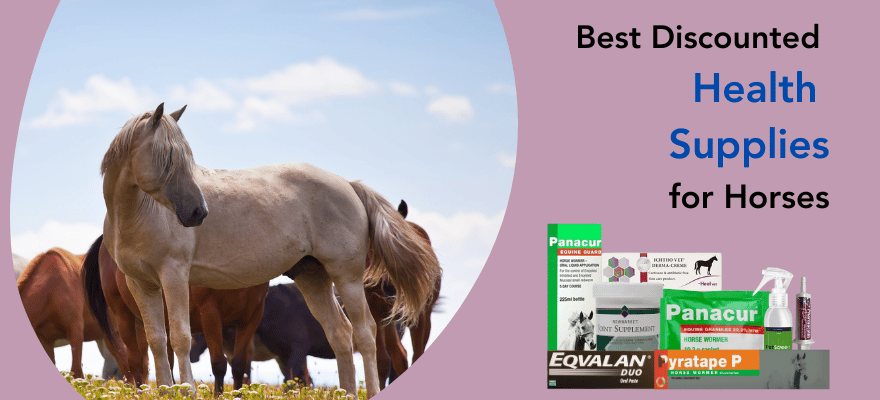Skin Disorders and Treatments in Horses
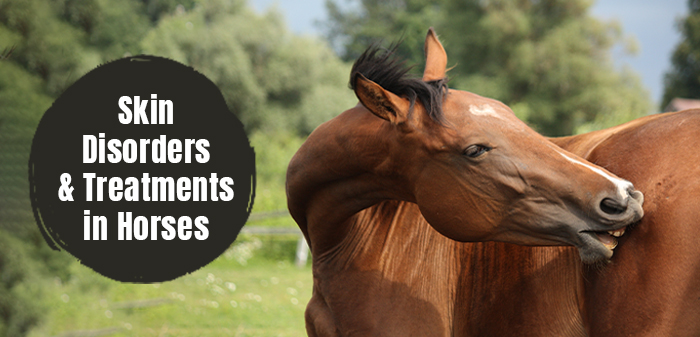
Horse’s skin is the largest organ of the horse’s body and in most cases, is the first organ to be exposed to external allergens. It serves as home to ectoparasites (fleas and ticks-like insects that live on the skin & coat of their host). This often results in abnormal horse skin conditions.
Throughout their lives, horses encounter several skin problems. The abnormal horse skin conditions vary from simple skin allergies to life-threatening melanomas. Bacteria, viruses, allergens, and parasites such as fleas, lice, etc. also cause skin problems in foals and ponies.
This blog provides you a comprehensive guidance on some of the common horse skin conditions along with their relevant treatment. So that you can prepare yourself better to fight against skin problems before they become a reason to worry.
#Pastern Dermatitis
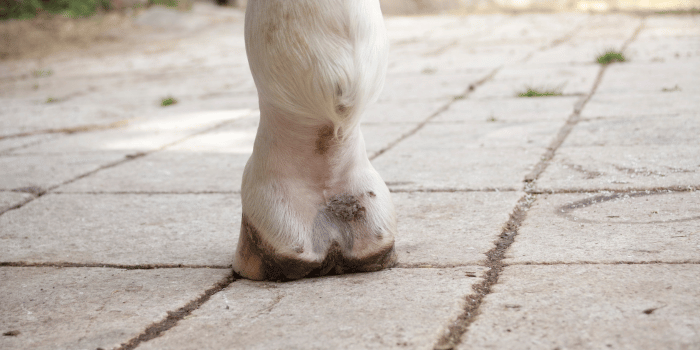
Greasy heel, scratches, or mud fever are other names for Pastern Dermatitis. It can affect any horse breed but is most common in draft breeds.
It is mostly caused by inflammation of the skin on the back side of the pastern(s).
Symptoms
- Lesions in pastern(s)
- Redness of the skin
- Swelling in affected limbs
- Ulceration
- Itchy and sensitive skin
- Affects multiple limbs
Treatment
Ideally, treating the underlying reason is the best treatment for pastern dermatitis.
Veterinarians may recommend antibiotic therapy along with cleaning and clipping the affected area of equine skin. Dermavet Cream’s antibacterial and antifungal properties help heal the wound quicker and alleviate itching.
Prevention
- Avoid exposure to moist and damp areas (mud, wet grass, etc.)
- Clipping hair on lower legs
- Keep bedding clean and dry
#Rain Rot
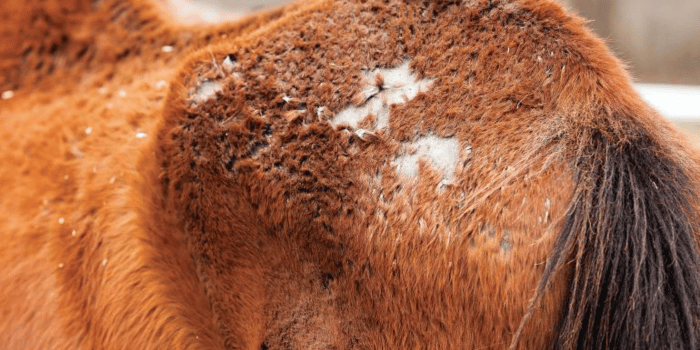
Also known as Streptothricosis or Rain scald, Rain Rot is mostly common in humid and warm regions during the rainy season. Matted hair or oozing/crusty lesions are the cause.
Symptoms
- Loss of hair
- Pink and scabby skin
- Persistent itching
- Lameness or inability to walk appropriately
- Loss of performance
Treatment
The treatment of Rain Rot includes vet-recommended medicated shampoo that contains chlorhexidine. Keep the affected area dry.
Tea tree oil and other essential oils can also improve the condition.
In severe conditions, the veterinarian may recommend antibiotic treatment.
#Ringworm
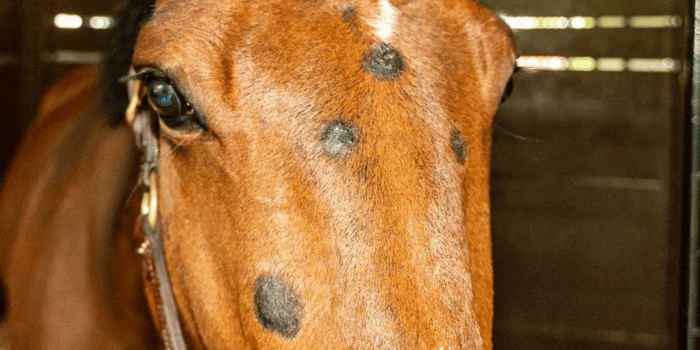
Ringworm is one of the contagious infections in horses caused by fungus, typically by Trichophyton equinum and Trichophyton mentagrophytes. They are transmitted to horses while rolling or digging, and by grooming products.
Commonly the infection is seen in the saddle and girth area. It may also affect the chest, head, and neck regions.
Symptoms
- Bald and scaly patches on the skin
- Hair loss (in a circular pattern)
- Redness of the skin
- Broken hair
- Itching
Treatment
Usually, ringworm infections resolve without any treatment, however, this may take a month or maybe longer.
Veterinarians may recommend an anti-fungal shampoo or other topical treatments.
Maintaining appropriate hygiene and sanitizing grooming supplies and other contaminated surfaces help prevent the infection to an extent.
#Cellulitis
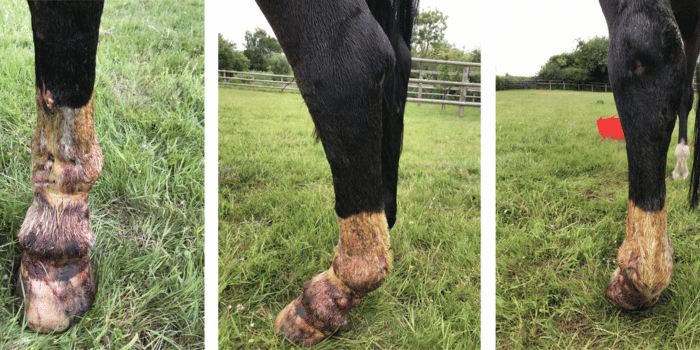
Cellulitis is a critical skin condition that affects the inner layers of a horse’s skin and tissues. In general, a bacterial infection from an insect bite or a wound causes this condition.
If not provided with appropriate treatment in a timely manner, it can be life-threatening.
Symptoms
- Acute swelling
- Fever
- Lameness and lethargy
- Scabby skin
- Warm and painful limbs
Treatment
The treatment includes administration of antibiotics and non-steroidal anti-inflammatory (NSAIDs) for symptomatic pain and swelling.
The veterinarian may also recommend hydrotherapy, hand-walking, lunging, and bandaging.
#Summer Sores (Habronemiasis)
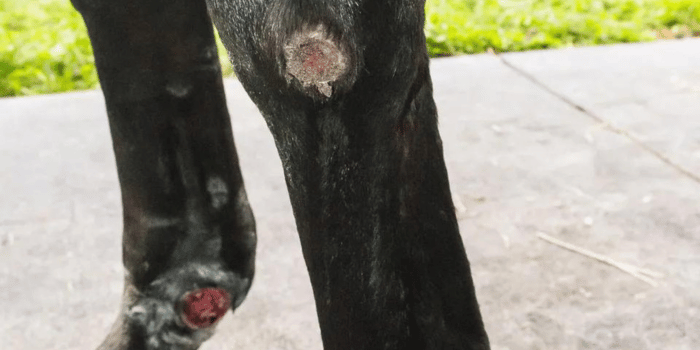
Summer sores are also known as Habronemiasis. It is generally caused by gastric worms including Habronema muscae, Habronema Microstoma, and Draschia megastoma. The skin lesions are caused by the larvae of these which are transmitted by flies.
Summer sores (Habronemiasis) are mostly seen in hot and humid regions. The lesions disappear during colder months and come back as the temperature increases.
It commonly affects the chest, limbs, lower abdomen, near eyes, or genitals.
Symptoms
- Itchy and dry skin
- Appearance of ulcers and lesions on the skin
- Hair loss
- Thick & crusty skin
Treatment
Sometimes lesions heal themselves and reappear. The veterinarian may recommend anti-inflammatory, macrocyclic lactones such as avermectins and milbemycins and surgical de-bulking.
Using effective fly control and disinfecting grooming tools may help reduce the risk of infection.
#Melanoma
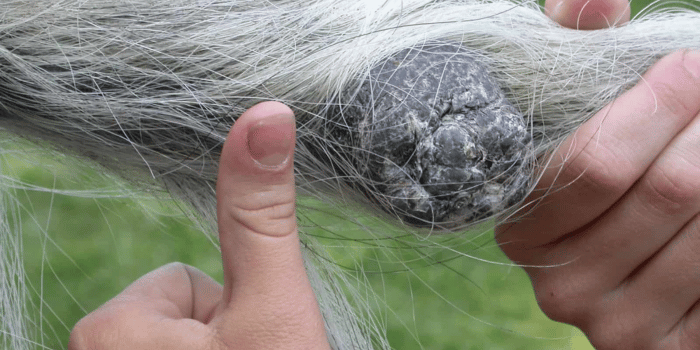
Mostly affecting gray-colored horses, Melanoma is a serious horse skin condition characterized by the formation of a lump or many lumps around the anal region, under the tail, near the sheath, penis, ears, or salivary glands.
The majority of the lumps are non-cancerous initially but become cancerous as the animal ages.
The lesions tend to spread to the liver, spleen, lungs, and other organs.
Symptoms
- Appearance of black, solid lump on the skin
- Difficulty in defecating and urination
- Loss of full control of bodily movements
- Abdominal pain and discomfort
- Weight loss
Treatment
Depending on the severity of the stage of tumor growth, the veterinarian may recommend chemotherapy drugs such as cisplatin or the surgical removal of the tumor.
Horse Skin Health – Frequently Asked Questions
Q. How to recognize if your horse is suffering from a skin condition?
A. The skin is one of the most sensitive organs of a horse’s body. It shows similar reactions to an injury or other illnesses. However, some of the common symptoms of skin diseases you can look out for include:
- Loss of hair
- Itching and inflammation
- Matting and dryness of the skin
- Scaly and flaky skin
- Depigmentation or excessive pigmentation of hair
- Lumps on the skin
- Thick and crusty skin
- Ulcers on the skin
- Swelling and tenderness
Q. What are the common skin illnesses in horses?
A. A horse’s skin is the first part exposed to various allergens and other illness-causing organisms. Cuts, burns, bruises, and lesions are the most common skin injuries horses experience.
Other than these, horses experience a variety of skin illnesses ranging from dermatitis to the fatal Melanoma or Squamous Cell Carcinoma. Other frequently seen horse skin conditions include Rain Rot, Cellulitis, Ringworm, and Summer Sores.
Q. What causes itching in horses?
A. When flies, mites, or lice-like external parasites are around horses feel itchy. For symptomatic relief, use Derma Creme as it eases itching and moisturizes dry skin.
But if you see them scratching persistently, that could be an indication of something unusual such as a bacterial or fungal infection or an allergic reaction. There are various reasons your horse seems itchy and if it’s more than just a scratch, consult with a vet to find out the exact reason for the same.
Q. Which parasites can cause problems to the horse’s skin?
A. There are so many external parasites that can compromise equine skin health. Some of the common parasites that can cause skin problems in horses include biting flies (horse fly, sand fly), non-biting flies (house fly, botfly), mites, mosquitoes, ticks, lice, etc.
Q. Does mange and lice need to be treated in horses?
A. Yes, both mange and lice infections need to be treated to maintain equine skin health. Other than causing discomfort, mange can lead to thickening and scarring of equine skin resulting in restricted movement of pastern joints. On the other hand, if not treated, severe lice infestation can be a reason for anemia in horses.
